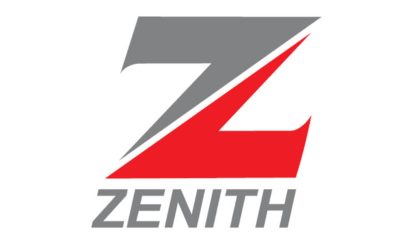- Nigeria on Growth Path, Says Ovia
ZENITH Bank Plc Chairman Jim Ovia has praised the Federal Government’s economic team for pulling the economy out of recession, saying the country’s economic outlook showed that it is now on a growth trajectory.
Ovia, who spoke while giving his goodwill message at the Deloitte in Dialogue Nigeria Economic Outlook 2019, at the Civic Centre, Victoria Island, Lagos, said he based his commendation on two key points – ease of doing business and the nation’s inflation rate.
He said the economic team has performed well on the nation’s remarkable improvement on the ease of doing business index, according the two ministers at the event – the Minister of Finance, Mrs. Zainab Ahmed and her counterpart in Budget and National Planning, Senator Udo Udoma, as well as the Minister of Industry, Trade and Investment, Dr. Okechukwu Enalamah and the Governor of the Central Bank of Nigeria, Godwin Emefiele.
While commending the senior government officials, Ovia urged them to work harder to further improve the nation’s ranking on the ease of doing business index, adding that “the target for the ease of doing business for Nigeria in 2019 in terms of ranking, should be single digit.
“We are no longer in recession and we have been able to manage the rate of inflation. The outlook for the nation shows that we are now on a growth trajectory,” he said.
On medicare, Ovia said in 2016, Zenith Bank invested over N1.2billion for the purchase of 10 mobile cancer diagnostic and treatment centres (MCC) – the first of its kind anywhere in the world.
The health intervention initiative, he said, was in partnership with a non-profit organisation-the Committee Encouraging Corporate Philanthropy (CECP), adding that the MCC, nicknamed PinkCruise, is a clinic on wheels with state-of-the-art facilities for screening, follow-up and treatment of cancer.
He listed some of the medical activities carried out on the PinkCruise to include Mammography, Endoscopy, Colonoscopy, Colposcopy, Cryotherapy, Laboratory, Vaccination and Surgeries for pre-cancer/early stage detection.
He said in 2017, the first four of the pilot set of Mobile Cancer Centres were delivered and handed over to the CECP. “The pilot phase of the ‘BIG WAR’ Against Cancer in Nigeria campaign was scheduled to start in the four old regions in Nigeria, that is, East (PH); Mid-West (Asaba); North (Abuja); and West (Lagos). The inaugural outreach started on Sunday, November 5, 2017 through Friday, November 10, 2017.
“The medical PinkCruise was deployed for the first time in Nigeria with a free cancer diagnosis, free eye and general screening and treatment in the town of Agbor, Ika South Local Government Area of Delta State. Some beneficiaries also came from the neighboring towns.
“So far, at least 5000 men, women and children have been screened using the Zenith Bank sponsored medical PinkCruise. It is estimated that over 30,000 persons would have been screened by end of 2019.
“In continuation of the fight against cancer, Mission PinkCruise will follow a year-long roster of health outreaches, covering all of Lagos State. To find out when the free medical mission will get to your domain in 2019, people are required to log to the roster of activities online at www.pinkcruise.org. or https://www.zenithbank.com/lagos-state-pilot-programe-12-months-schedule-of-mission-pinkcruise.pdf.,” he said.

 Naira4 weeks ago
Naira4 weeks ago


 Naira4 weeks ago
Naira4 weeks ago




 Naira4 weeks ago
Naira4 weeks ago




 Naira3 weeks ago
Naira3 weeks ago
 Commodities4 weeks ago
Commodities4 weeks ago


 News4 weeks ago
News4 weeks ago
 Travel4 weeks ago
Travel4 weeks ago




 Naira3 weeks ago
Naira3 weeks ago






















